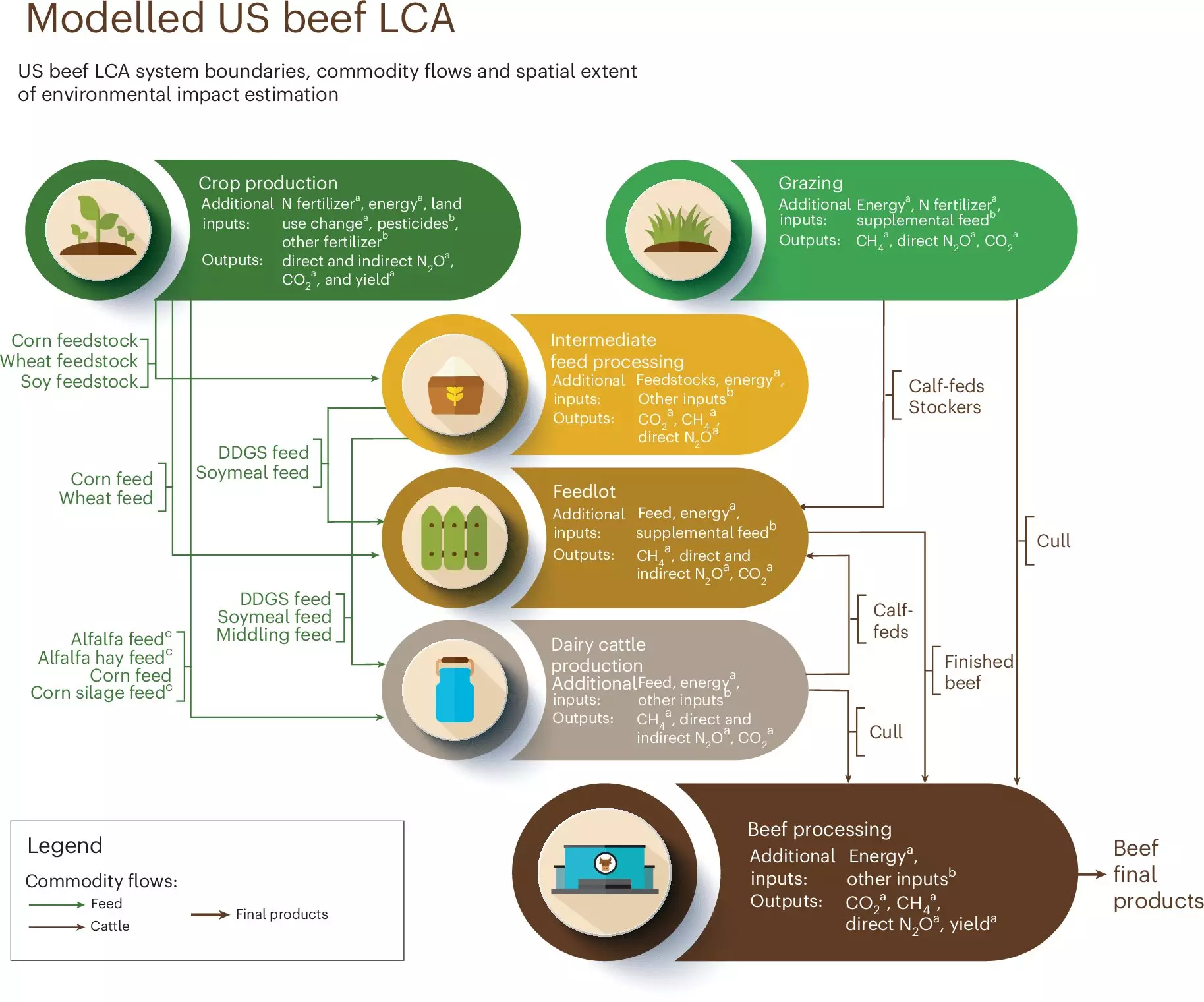The impact of greenhouse gas emissions on climate change is an urgent issue, particularly in relation to human activities. Among these activities, the beef industry in the United States stands out as a significant contributor, driving approximately 3.3% of national emissions. As the demand for beef continues to rise, so too does the necessity of understanding and mitigating its environmental consequences. This urgency is underscored by new research from the University of Minnesota’s Institute on the Environment (IonE) and The Nature Conservancy, which outlines feasible strategies that the beef industry can implement to drastically cut down its greenhouse gas outputs.
The recent Nature Food publication highlights a pioneering approach in assessing the beef industry’s environmental footprint by utilizing county-level and location-specific analyses. Lead researcher Rylie Pelton and her team mapped out emission hotspots, revealing that beef-related greenhouse gases account for a staggering 258 million metric tons annually. The emissions are not uniformly distributed; they predominantly originate from feed production and confinement systems located in the Great Plains and Midwest, while grazing emissions are more dispersed across the Western regions. This nuanced understanding sheds light on the specific areas where interventions can yield the greatest benefits.
The research identifies that nearly a third of these emissions could potentially be reduced by adopting 42 alternative practices throughout the supply chain. This represents a call to action for all stakeholders involved in beef production—from ranchers to processors—to engage with innovative methodologies. Practices like cover cropping, utilizing feed additives, and energy management systems can significantly alleviate the environmental burden of beef production. The emphasis on tailored recommendations based on geographic variables is crucial; strategies effective in one region may not hold the same efficiency in another.
One of the pivotal findings of the study is the emphasis on localized solutions. For instance, in the Southeastern U.S., integrating trees into pasturelands can substantially enhance carbon capture, while in the Northern Great Plains, rehabilitating degraded wetlands offers a robust opportunity for emission reduction. These region-specific recommendations underline the importance of adapting strategies to local environmental contexts, thereby increasing the likelihood of successful implementation.
Kris Johnson, a co-author of the research, articulates the pressing need for sustainability to become ingrained in the American beef industry. This isn’t merely an environmental concern; it holds profound implications for the economic stability of ranchers and broader communities. By viewing sustainability as integral to business operations, the beef sector can ensure long-term viability while meeting growing consumer expectations for environmentally responsible production methods.
IonE’s FoodS3 model represents a significant advancement in understanding food supply chain sustainability. This framework offers a transparent overview of the complexities involved in food production, allowing stakeholders to identify actionable steps for emission reductions. The alignment of technological innovation with sustainable practices is paramount in creating a resilient food system that aligns with climate goals.
As the U.S. beef industry grapples with the dual challenges of meeting rising consumer demand and addressing its environmental impact, concerted efforts must be made to implement sustainable practices. The research presented not only illuminates the pathways for reducing emissions but also serves as a clarion call for industry collaboration. Initially daunting, the task of transforming the beef supply chain into a more sustainable model becomes manageable when approached through localized, data-driven strategies. The future of beef production in the U.S. hinges on the willingness to adapt and innovate—ensuring both economic stability and environmental sustainability for generations to come.

